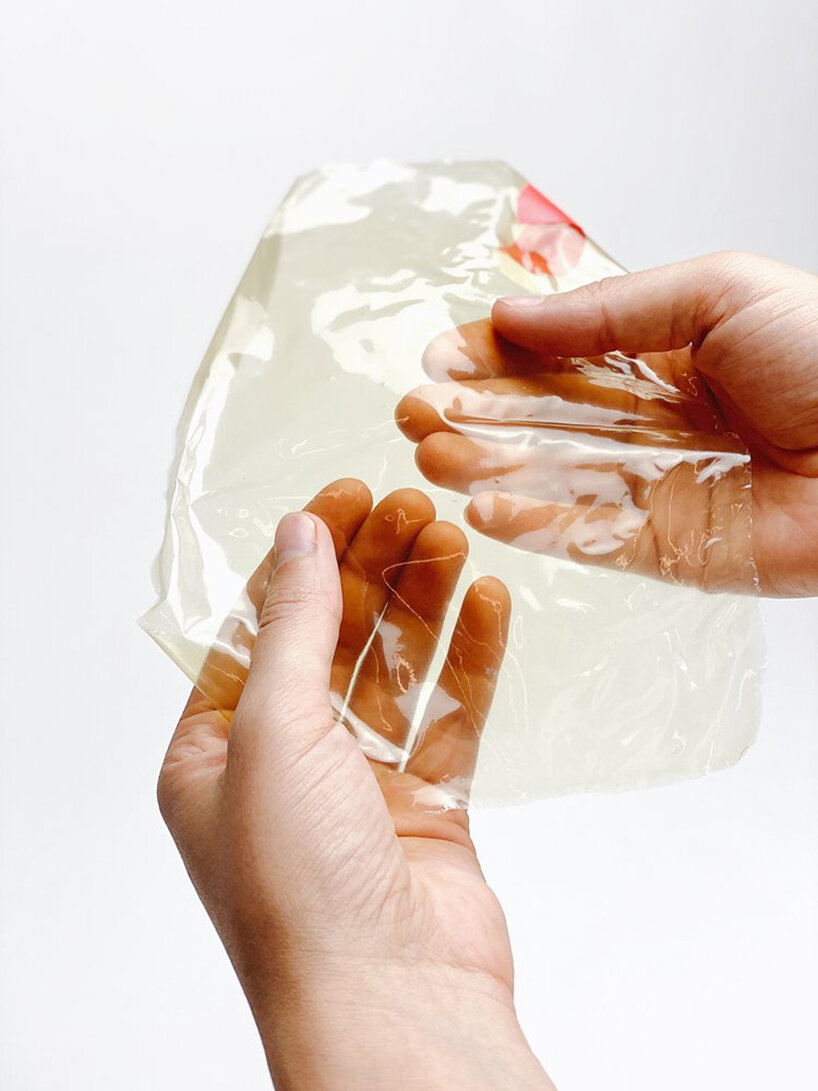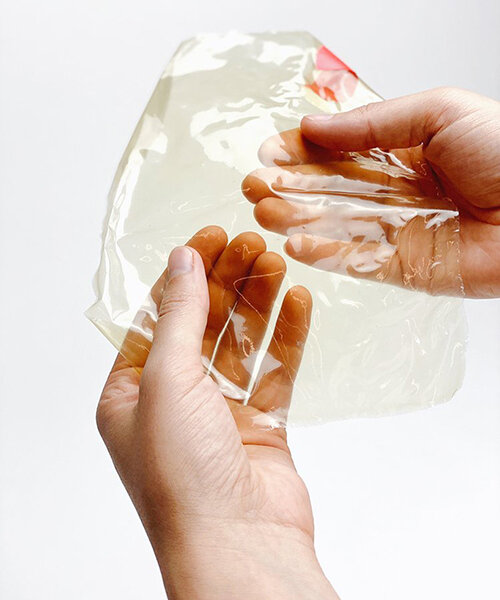biodegradable polystyrene from plastic-eating mealworms
the circular ‘chitofoam’ system transforms the exoskeletons of plastic-eating mealworms into biodegradable polystyrene substitutes. developed by charlotte böhning and mary lempres of doppelgänger, this material is shock-absorbent, lightweight, and water-resistant, suitable for food packaging, as it can be modeled into cups, packing peanuts, and other shapes.
expanded polystyrene, also known under the name ‘styrofoam’, is not biodegradable. and throughout the years, it just cracks into smaller pieces dubbed ‘microplastics’. researches show that solely americans discard approximately 25 billion styrofoam cups every year. and each of these cups may need half a millennia to degrade. moreover, styrofoam is difficult and uneconomical to recycle, resulting in occupying almost 30% of our landfill waste. all images by charlotte böhning and mary lempres of doppelgänger
all images by charlotte böhning and mary lempres of doppelgänger
lightweight, water-resistant & backyard-compostable packaging
with the aid of these tiny creatures, the circular ‘chitofoam’ system (see more here) takes a harmful packaging material and regenerates it to create a circular solution for styrofoam waste management. in 2015, stanford university researchers found that mealworms could safely eat, and thus biodegrade, styrofoam: 100 mealworms could eat 40 milligrams of styrofoam a day with no impact on their health or edibility.
‘in our studio, we began to dispose of our modeling foam and packaging waste in a homemade mealworm biodigestor for depolymerization. as material developers and designers, we began to collect the exoskeletons that our plastic-eating worms shed and extracted a biopolymer gel called chitosan,’ explain the designers. ‘after much development, we created a lightweight, water-resistant, shock-absorbing and backyard-compostable packaging material analogous to styrofoam. we are in the process of pushing our replacement ‘chitofoam’ further by reimagining packaging and designing more efficient, lattice-structured forms for preserving and protecting products.’
as the charlotte böhning and mary lempres said, the production and consumption of styrofoam have a harmful effect on various life forms: the laborers who manufacture it are exposed to potential mutagens/carcinogens, the mother who finds trace amounts of styrene in her breast milk, the students who eat their food from styrofoam containers, or the marine life that interacts with the harmful debris. by replacing these non-recyclable styrofoam products with a healthy, antifungal, and antimicrobial material, design duo doppelgänger seek to improve the life quality of the aforementioned living beings.
backyard-compostable bioplastic foam
the styrofoam-eating mealworms are still 100% edible by humans. mealworm farming has been highlighted in recent years as an environmentally-sustainable solution to malnutrition, particularly in developing rural economies. furthermore, growing edible mealworms is affordable, low-resource and space-efficient. the resultant food source is twice as protein efficient as beef (with zero methane emissions). thus, the designers seek to develop a mealworm protein product made from their plastic-eating mealworms and packaged in their backyard-compostable chitofilm. in this way, they hope that the mealworms could help to achieve two sustainable development goals, providing food protection and fighting pollution.
‘we need to replace a harmful, single-use material with a healthy, regenerative one. in addition to focusing on packaging design innovation, there is an opportunity for the exploration of mealworms as an alternative protein source for a sustainable agricultural and global future. the imagery of such earthy, wriggling worms munching audibly through one of the most harmful man-made contaminants is also captivating. the solution is unexpected (and seemingly unnatural),’ say charlotte böhning and mary lempres.‘it might be met with excitement or apprehension or awe or skepticism; in any case, the beauty of the design is in letting nature remediate damage, divert waste and create better alternatives with the help of technology and design. the effort to de-stigmatize insect presence in our food and waste systems makes people invested. the familiar tactility of chitofoam and minimalism of the proposed products draws people in.’






project info:
name: chitofoam
designers: charlotte böhning and mary lempres
selected for the 2022 lexus design awards (see more here)








